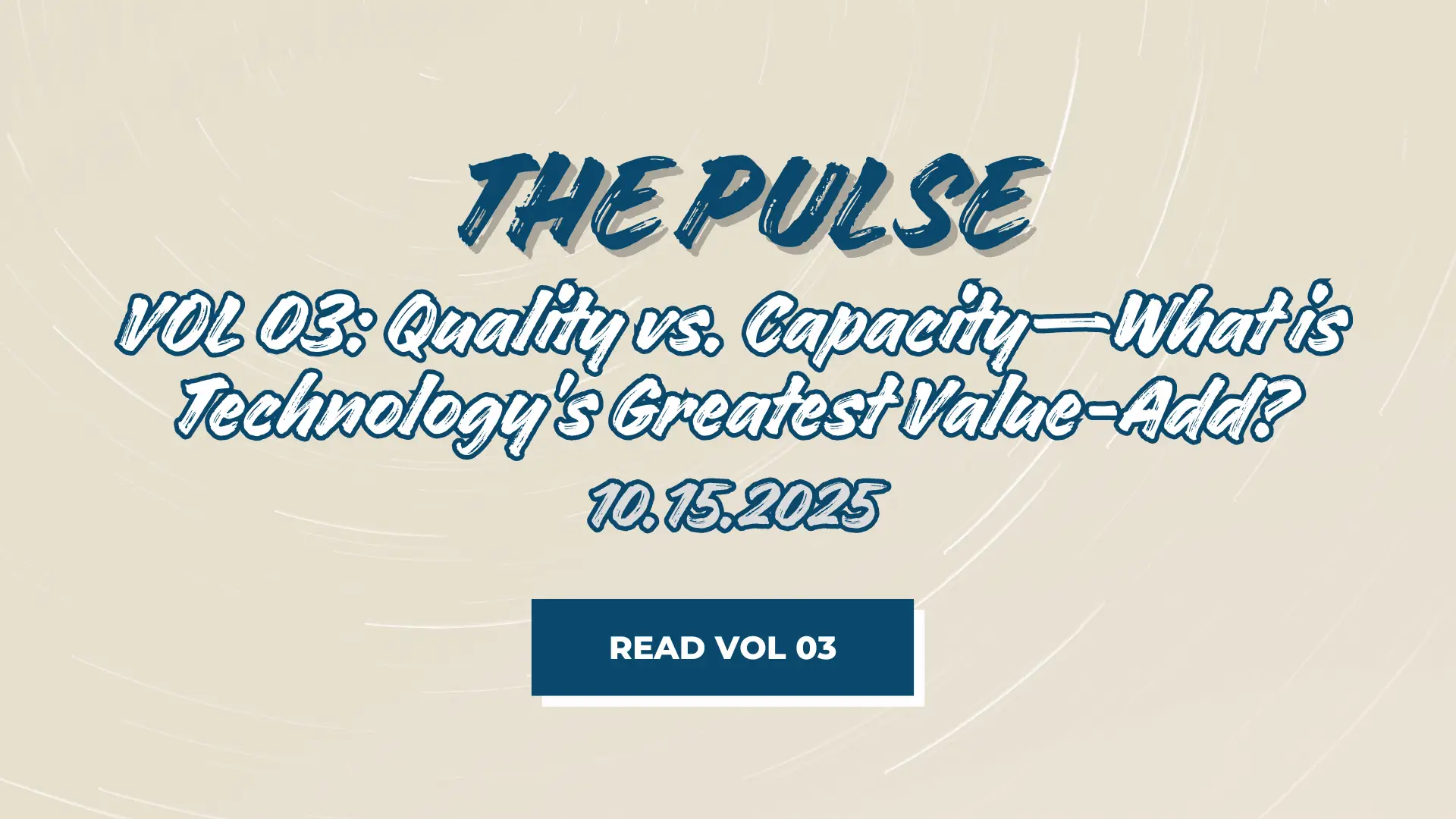The accelerated advancements and adoption of Artificial Intelligence (AI) and Large Language Models (LLMs) are reshaping entire industries and enterprise strategies.
This is far from new “news.” The deep-rooted impact and implications that AI will have on enterprise-wide strategies are well beyond being acknowledged and accepted.
Let’s take the Financial Services industry as an example. Financial institutions and wealth management firms invest heavily in AI across back-, middle and front-office functions to optimize internal and external operations to enhance client engagement and strengthen decision-making.
Yet, despite this widespread acknowledgment and adoption, many firms struggle to generate real value at scale.
So, where exactly are firms failing? More often than not, this boils down to the basics, particularly overlooking the foundational pillars that enable AI strategies to be effective, scalable and sustainable.
To move beyond simple use case implementations and experimentation and to drive materially impactful outcomes that move the needle, enterprises must structure their AI strategy around three core pillars:
1. Data (And Document) Ingestion, Aggregation And Centralization;
2. Intelligent Data Processing And AI/LLM Mechanism;
3. AI-Driven Workflow, Automation And Integration.
When structured and implemented properly, these foundational pillars provide enterprises with a focused, strategic framework for building, deploying and delivering AI initiatives that drive real impact and a material ROI.
Pillar 1: Data/Document Ingestion, Aggregation & Centralization
The backbone of an effective enterprise AI strategy is a secure, centralized repository where structured and unstructured data, notably including documentation, resides. This ensures that AI and LLMs can access and utilize enterprise-wide insights efficiently.
The Overlooked Goldmine: Data Embedded Within Documents
For decades, financial institutions have collected vast amounts of data, yet much of it remains buried within documents—financial statements, trust documentation, legal contracts, tax slips, compliance reports and so forth.
This embedded data has long been overlooked and underutilized, despite being a critical component for wide range of back-, middle and front-office operations.
The ability to aggregate, centralize and structure documents within secure Digital Vaults enables firms to unlock previously inaccessible intelligence and reduce, even eliminate, the dependency on traditionally slow and manual workflow.
Ensuring Data Quality & Accuracy
A Qlik survey found that 81% of companies struggle with AI data quality, which puts the ROI of AI investments and business stability at risk. AI agents depend on high-quality inputs; inconsistencies and errors undermine reliability and decision-making.
Instilling a framework for data governance is essential for all applications of AI and LLMs, regardless of use case. Financial institutions must implement validation mechanisms to ensure that AI processes only accurate, current and complete data, mitigating the risk of flawed or incomplete insights.
Extracting Value With OCR & Intelligent Indexing
While AI and LLMs excel at structured data, unstructured data requires Optical Character Recognition (OCR) and intelligent indexing to be useful. OCR converts scanned and unstructured documents into machine-readable formats, while indexing classifies and organizes the data for instant retrieval.
By layering AI-powered OCR and indexing on top of Digital Vaults, firms can efficiently extract, categorize and analyze critical insights from unstructured formats—ensuring the ability to now process critical data from both structured and unstructured formats. We call this Intelligent Document Processing or just IDP for short.
Pillar 2: Intelligent Processing & AI/LLM Mechanism
Once data and documents are centralized and structured, the next step is transforming them into actionable intelligence.
Scaling Secure AI With Private LLMs
Public AI models pose compliance and security risks, particularly in financial services. Leaning on foundational LLMs while ensuring data remains private provides the best of both worlds—scale, flexibility and security.
The ability to take an off-the-shelf LLM, rapidly deploy, test, iterate and launch AI applications expedites what was once a costly, time-consuming endeavor reserved for enterprises building proprietary models.
Contextualizing, Summarizing And Extracting Critical Data
AI-powered extraction isn’t limited to individual documents—it extends across entire document ecosystems. By leveraging Retrieval-Augmented Generation (RAG) and vector databases, enterprises can query and retrieve insights from multiple documents stored in Digital Vaults.
For example:
• AI can extract, summarize and validate renewal dates from multiple agreements, reducing manual oversight.
• Trust documents containing beneficiary details can be processed at scale, ensuring compliance and accuracy.
• AI can contextually analyze multiple financial statements to surface anomalies or discrepancies.
This approach allows firms to contextualize data into insights in real time, reducing the time spent manually sifting through documents.
Pillar 3: AI-Driven Workflow, Automation And Integration
AI isn’t just about extracting insights—it must drive real-time automation, workflow, and process improvements.
Turning Digital Vaults Into Intelligent Decision Hubs
Static document storage provides minimal value. AI-powered Digital Vaults are intelligence hubs, enabling automated workflow and driving material outcomes based on AI-extracted insights.
For example, AI can:
• Extract expiration/renewal dates from documents to trigger automated renewal reminders, feeding them directly into CRMs.
• Analyze government-issued IDs (e.g., scanned licenses) to validate and verify documents required for onboarding and compliance-driven requests.
• Extract beneficiary details from Trust documentation to automate auto-population in third-party systems.
Seamless Integration With Enterprise Systems
AI-generated insights should be accessible to the right Lines of Business and roles where teams work daily. The ability to integrate extracted data from documents with CRMs, financial planning tools, and compliance systems ensures that:
• Client records are auto-populated with accurate and recent client extracted data.
• Advisors receive real-time notifications on client-related events.
• Compliance teams are proactively alerted to document-driven regulatory obligations.
Final Takeaways: Building Your Foundation
AI continues to transform enterprise-wide strategies and entire industries, notably the Financial Services that I highlighted throughout this article. However, firms that fail to build and implement using the three foundational pillars will struggle to realize their full potential, while those who focus on ensuring each foundational pillar is in place will provide a path forward, improving the chances of success when and where AI is applied both externally and internally.
Relevant links:
Document-Data: The Premium Oil Fueling Enterprise Intelligence
Every Enterprise Needs An AI Strategy: Does Your Organization Have One?
7 Proven Strategies to Win at The Great Wealth Transfer
This article was originally published on Forbes.com.





